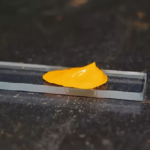When planning repairs, many want to do with “small” losses, and try to do the maximum number of work on their own, without involving specialists. As for the ceiling, the drywall is precisely the material that, with a careful study of the installation technology, will not be difficult in the installation. Therefore, you should take a closer look at the drywall ceilings with your own hands.
After all, you need to know how to assemble a ceiling made of drywall correctly. However, it will be difficult to do without assistants, especially if you need to install drywall on a large ceiling area. After all, drywall is quite heavy-the weight of one standard sheet is 15-20 kg, with a length of 2.5 m, width-0.5-1.2 m and thickness 10-12.5 mm.
This is what regarding the organizational part. Now you need to decide on the choice of the brand of the coating itself. You can get useful experience for attaching drywall ceilings with your own hands by watching a video using the technology for installing suspended ceilings, as well as the installation of suspended ceilings with your own hands.
For installation on the ceiling with arches and bends, ordinary drywall is suitable. It is more plastic and bending. In other cases, it is better to use waterproof drywall processed with a special composition (it is still marked with green), because during the plastering and machine work, which will follow after the end of the installation, drywall is impregnated with moisture. In rooms with high humidity, for example, in the bathrooms, only moisture -resistant drywall is used.
When calculating the necessary material, you need to take into account the number of sheets of drywall, UD-and CD profiles, the number of fasteners of CD profiles, connecting brackets, dowels and screws, cross formations. Having decided to make plasterboard ceilings with your own hands, you should find out how many sheets will be needed, you need to divide the ceiling area into an area of one sheet, plus a small coefficient for all sorts of unforeseen circumstances.
By the way, the smaller the ceiling, the more waste will remain and, therefore, you need a greater supply. From the pieces “cut” the common sheet of coating will be impossible. To calculate the UD profiles, you need to divide the ceiling perimeter into the profile length (standard size – 3 m), plus a small stock. CD profiles are calculated as follows: the number of drywall sheets is multiplied by the number of profiles for one sheet, minus one profile.
Fasteners for CD profiles: the ceiling width is divided into a gap between the mounts (about 0.8 m), subtract a unit, and then multiply by the number of CD profiles. Connecting brackets are used in cases where the ceiling width is more than 3 m.
Cross compounds are used in places of connection of the CD profiles at a right angle, where sheets of drywall will subsequently joke together. This is also very important when installing plasterboard ceilings with your own hands. You can use self -tapping screws instead of cross.





